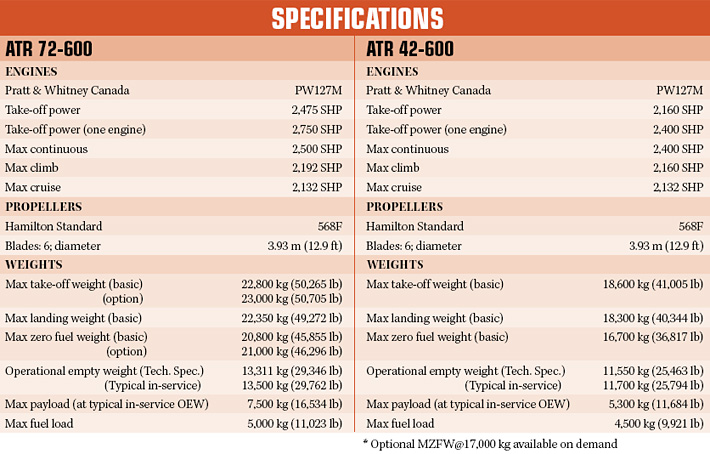ATR Propelling Beyond Expectations
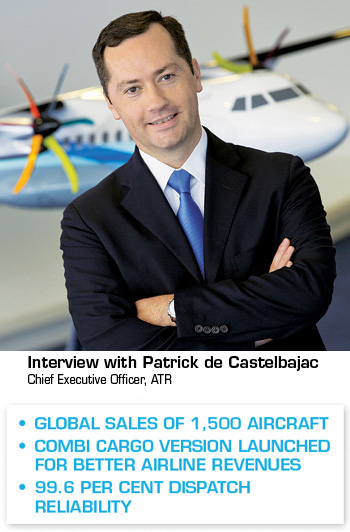
ATR is the world leader in the regional aircraft with 90 seats or less. It has sold over 1,500 aircraft since the beginning of the company in 1981. ATR is present in over 90 countries, operating with more than 190 airlines. That truly is an emphatic statement for a company which began with a business case of 400 units. After the recent organisational restructuring, here, in an interview with the Editor-in-Chief of SP’s AirBuz, Jayant Baranwal, the new Chief Executive Officer (CEO) of ATR, Patrick de Castelbajac spells out the plans of the company.
SP’s AirBuz (SP’s): Could you tell us the rationale behind the change of logo which looks nice and smart?
Patrick de Castelbajac (Castelbajac): In the past one year we have introduced a number of changes, keeping the customer at the centre of the organisation and this has helped us develop and bring about improvements in the aircraft. We have gone through several organisational changes and the team has come up with a clear focus. The new logo is part of this change, it is more dynamic and it is more close to who ATR is today. Dynamics is intrinsic to this change.
SP’s: Could you tell us the number of aircraft ATR has sold around the globe?
Castelbajac: Recently, we sold our 1,500th aircraft to Japan Airlines. It is good news for us as until now we were not present in Japan which is a great country for aeronautics. We are proud that they chose ATR. Since the beginning of our company, we have sold 1,500 aircraft, including the one sold to Japan Airlines.
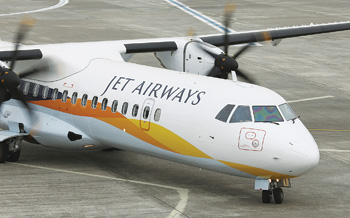
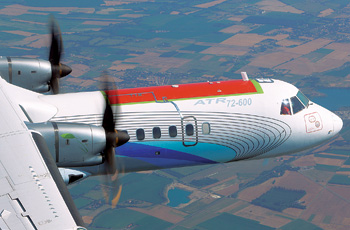
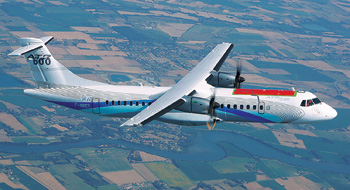
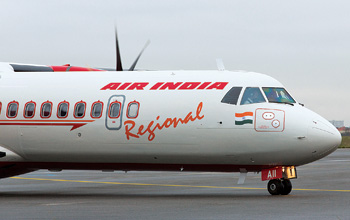
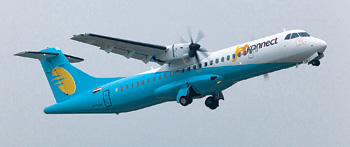
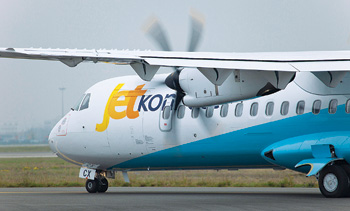
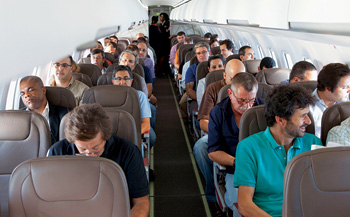
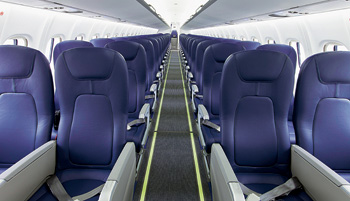
SP’s: Does the figure exceed the expectations of the company?
Castelbajac: If you take the original business case for which the company was created, it was 400 aircraft. We certainly have exceeded the expectations. We have increased production by 15 per cent a year, we have had 60 per cent growth from 2011 to 2014. Our production, our sales are growing fast. We expect to deliver 90 aircraft this year, compared to what we had 10 years ago, the production rate was between 10 12 and 15, now we do 90. Last year we sold 160 aircraft. We are sold out for the coming years. It is a challenge to tell our next customer “We are sorry, the next aircraft will be 2018-19.”
SP’s: Can you talk a little bit about your greener sky initiative?
Castelbajac: We are the first regional original equipment manufacturer (OEM) to get the 14001 certification which means from design to disposal and throughout the life of the aircraft, we give priority to environment. ATR aircraft burn less fuel than any other aircraft. Emissions from an ATR aircraft are very low. We conducted a study recently and found that a passenger going from Brussels to London by air and a passenger travelling from Brussels to London by train inhales the same amount of CO2. The noise footprint of an ATR is much smaller. We are working with the European Commission on environmental initiatives. We are also working on new materials to reduce environmental footprint. ATR is in the lead on different aspects of environmental programmes.
SP’s: What is special about ATR 600?
Castelbajac: In the regional market, today it is the best selling in the world. We took the fundamentals of ATR 500, which is a basic and efficient aircraft and modernised it. In ATR 600, we have a much better cabin which is lighter and has one-third more luggage carrying capacity. The ATR 500 racks were not big enough. The cabin is now nicer and more roomier. Most importantly we have glass cockpit technology on it that was designed for Airbus aircraft. It is safer for pilots and also safer for everyone. The ATR 600 is a much improved aircraft from an avionics perspective and also operationally for a pilot.
SP’s: Any solutions for low visibility landing?
Castelbajac: We have just signed with Elbit Systems for integrating ClearVision Enhanced Flight Vision System (EFVS) with the Skylens wearable display onboard. It is capable of CAT 3 type of operations where airfields lack sophisticated infrastructure. The airports which are not fitted with ILS (instrument landing system), this new system helps in landing. In India where airport infrastructure needs to be developed, this system is appropriate as developing ILS is expensive. This equipment will enable aircraft to land anywhere.
SP’s: Could you indicate how ATR aircraft can contribute to cargo business? The Civil Aviation Minister has stated that developing cargo business in India is closest to his heart.
Castelbajac: ATR has about 80 to 90 cargo aircraft and Fedex is the biggest operator as ATR aircraft is not only economical, but also dependable. It has a dispatch reliability of 99.6 per cent. It is also cheap to operate. We also have a combi version which we recently sold to an operator in New Papua Guinea. The cargo version provides 20 cubic metres of extra space, thus enabling an airline on thin routes to bring in both passenger and cargo traffic.
SP’s: Which country operates the largest fleet of ATR?
Castelbajac: That is a good question. The largest operator is Azul in Brazil. They are now also present in Portugal. Azul operates nearly 60 aircraft. Then we have Lion Air in Indonesia to whom we delivered the 50th ATR last month.
SP’s: Which is the most promising market?
Castelbajac: India is a very promising market. It looks to me that the current government is trying to resolve the blocks in the system. The system needs to be simplified. If that happens, then India will be a big market, if not the biggest. Indonesia is an important market for us. They have 60 to 70 aircraft on order and their GDP growth is 6.5 per cent and they fly a lot.
SP’s: When was the first turboprop delivery in India and who was the client? Are you looking at new airlines such as Vistara?
Castelbajac: Jet Airways was the first client in India when it bought a turboprop in 1999, followed by Alliance Air (Air India Regional). There are four operators in India with a fleet of 30 aircraft. We are talking with some start-ups and with quite a few people in India. The next growth market in the regional market is here. ATR has a 80 per cent market share in the turboprop market. When we look at regional aircraft below 90 seat we have 40 per cent market share, followed by Embraer.
ATR in India
ATR is well established in India with 30 aircraft in operation. It entered the Indian market in 1999 with the introduction of the comfortable and fuel-efficient 70-seat ATR 72 by Jet Airways. Our current customers are Jet Airways (18 ATR 72s), Alliance Air (8 ATR 42s and 72s) and Air Pegasus (2 ATR 72). A new regional start-up, TruJet, has started operations with 2 ATR 72s in July 2015, from Hyderabad.
Following its strong expansion in India, ATR set up in 2006 a customer support centre in Bengaluru. Today, this center supports more than 50 ATR operated in South Asia.
ATR aircraft are well known for their low-operating costs, environmental friendliness and short runway capability. The ATR 72-600 recently introduced by Jet Airways and Alliance Air, burns 50 per cent less fuel than equivalent-sized regional jet and 30 per cent less than other 70-seat turboprop. The new ATR-600 series are fitted with the most modern technologies including a new full glass cockpit specifically developed for ATR by Thales, and a new cabin developed by the famous Italian designer Giugiaro.
ATR aircraft demonstrated their unmatched versatility and great adaptability to the Indian market with customers as diverse as full service airlines, low-cost carriers or freight and logistic companies. They are perfect aircraft to increase regional connectivity and operate at remote airfields with limited infrastructure.
Two Indian MRO are qualified to maintain ATR aircraft and developed expertise on the type through the past years: Airworks in Hosur and GMR in Hyderabad. ATR is the world leading regional aircraft manufacturer. Since the beginning of the programme, ATR has booked orders for over 1,500 aircraft, positioning the ATR 42s and ATR 72s as the world reference for regional networks. Today, 190 airlines operate ATR aircraft in more than 90 countries.
SP’s: Can you tell us about the economics of turboprop operations?
Castelbajac: The paramount advantage is that it consumes less fuel compared to a jet of the same size. It consumes over 40 per cent less fuel than a jet and compared to a Bombardier turboprop which is in direct competition with us it is 25 per cent less fuel. Also the airport taxes and other taxes are lower for turboprop aircraft. We are trying to improve our maintenance costs. For ATR aircraft, reliability is the key and we have a dispatch reliability of 99.6 per cent despite operating with 190 operators in 90 countries. The take-offs are within 15 minutes of the schedules that means that ATR aircraft are dependable aircraft which keep the customers happy and pleasant.
SP’s: Are there any specific expectations from the proposed civil aviation policy of India?
Castelbajac: Simplicity will be most welcome. It is paramount that civil aviation should grow in India. It will grow if it is less burdened with way too many taxes and administrative burden. When we talk to the customer, this is what we hear and we share the expectation of our customers.
SP’s: Could you talk about jets vs turboprops? Is the altitude of about 25,000 feet sufficient as compared to about 40,000 feet of jets? Also with regard to speed and time, turboprops seem to be a bit lower compared to that of a jet. Your perspective?
Castelbajac: It is simple. Our aircraft fly shorter distance. If you have to fly 40,000 feet and have 250 nautical miles to cover, then you will go up and down in quick time and you will have only about five minutes of cruise time. This process burns up a lot of fuel. As we have short distance to cover, we do not have to go to high altitudes and at the same time we can go faster. It all depends on distance. If you fly 300 nautical miles there is no point going up to 40,000 feet. Yes, there is little more turbulence if you are at 25,000 feet and that is the law of physics. What we gain is the savings on the fuel and not much of time wasted, which translates to paying less fare for the customer.
SP’s: What technological innovations are you proposing?
Castelbajac: We will do a number of improvements in avionics. We are working on improving approaches in difficult terrain and landing. We are going to work on improved avionics to help pilot operations. Also from a passenger perspective we are coming up with high density cabins with 78 pax, offering a high level of comfort. We are in talks with engine manufacturers to better the engines and to ensure that they burn less fuel and bring down maintenance costs. We are in discussion with the key players there. We are looking at air conditioning, lighting and other systems. Above all, we are looking at providing traveller comfort and by doing all these we can continue to maintain our leadership position.
